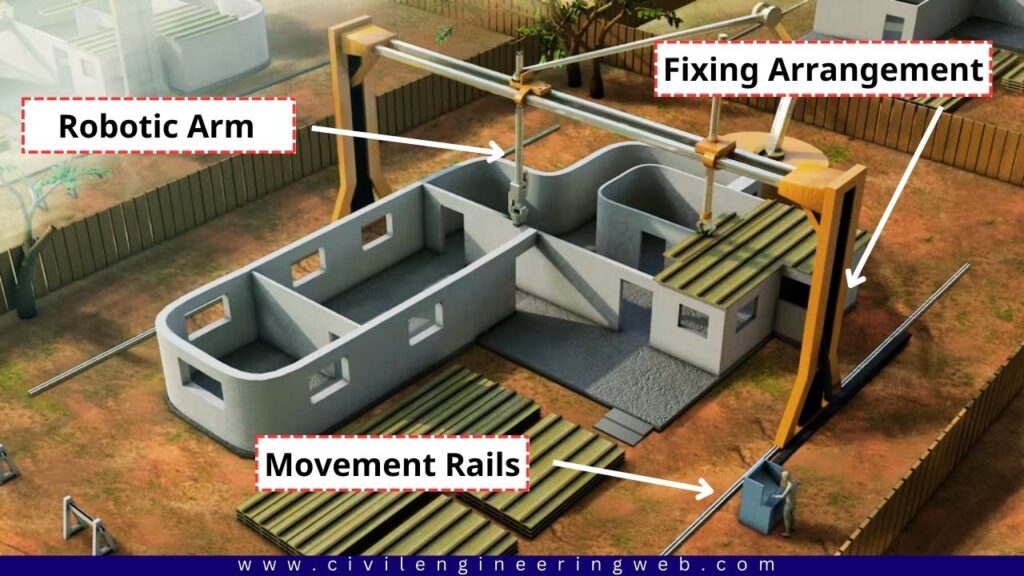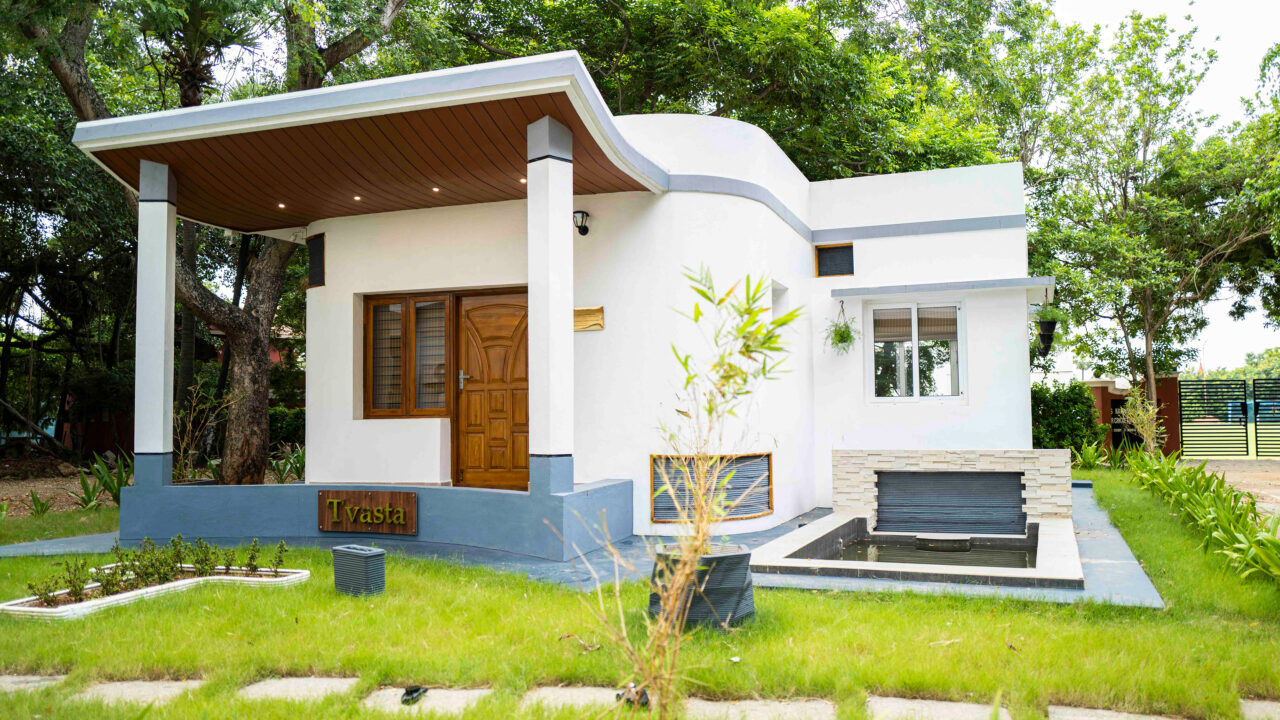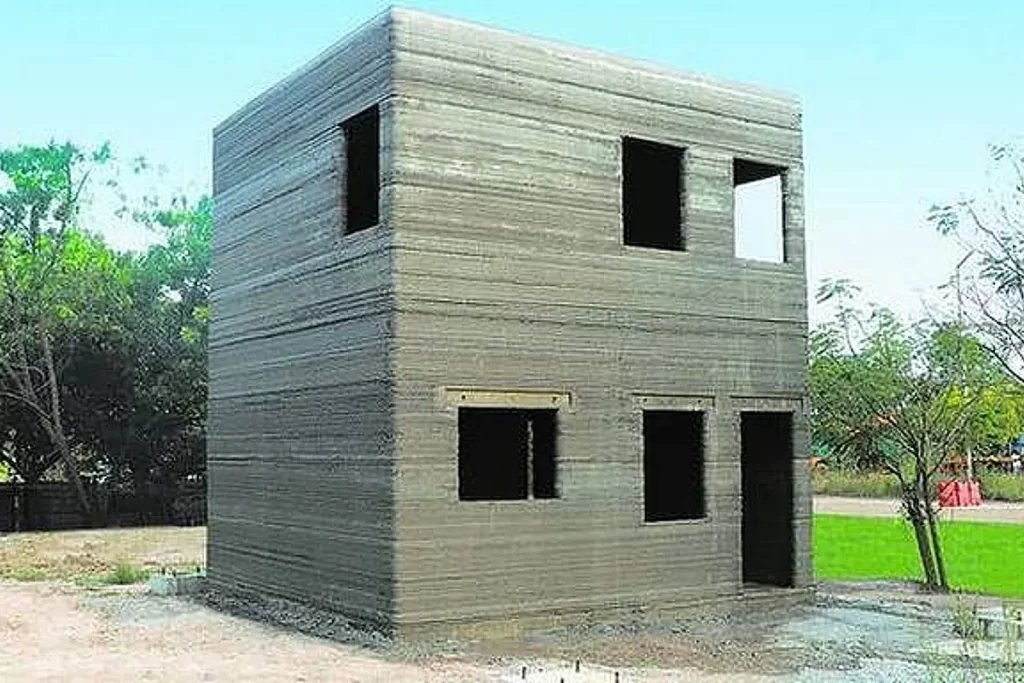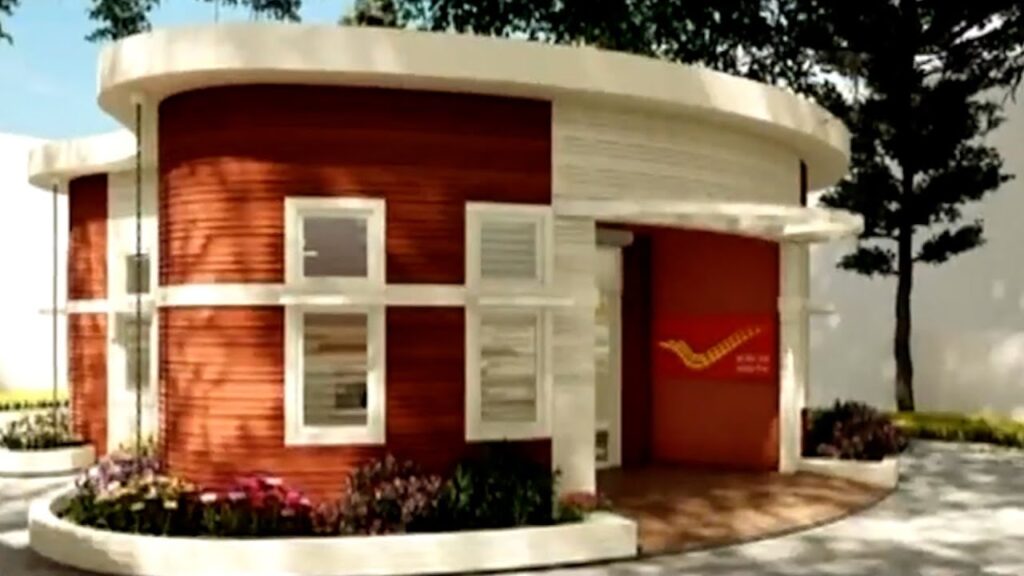In this article, We explain the different details of 3D Printing in construction such as What is 3d printing, how to construct houses using pros and cons of 3d printing technology, Examples of 3d printing construction and sustainability point of view about this technology.
So please read the article till the end, and if you get any valuable information from this than please share with your friends.
Let’s Start the article with definition of 3d printing
Table of Contents
What is 3D Printing?
3D Printing is a process in which different types of equipment, materials, technologies and other resources are used to create a three dimensional objects.
These 3-D Objects are printed by robotics machineries. The quality and finishing of object is much better than manufactured object, even 3d printed product is ready to use within short period of time as compared to manufactured product.

If this technology used in construction to create different parts of House or structures, than its called as 3D Printing in construction. And, House created by this technology known as 3D Printed House.
It was first developed in the 1980s, but due to expansive machinery and other operations, it was not too popular. But, Nowadays due to technology revolution, the operation cost of 3d printing becomes affordable which results the more usages of 3d printing technology in various industries.
3d printing allows engineers to creates any shape of structures or parts due to use of robotics. This is very beneficial for architect which gives design freedom.
The process of 3d printing in construction is very simple as compared to conventional construction method which saves the energy and wastage of material as well as gives the high quality construction.
The use of 3d printing technology allow faster construction that reduce the final cost of construction due to saving of time. Also, In this technology, no need of any type of formworks that minimize the cost again.
Let’s discuss the construction process of house or any other structural element using 3d printing technology.
How 3D Printing Works?
The construction using 3d printing includes the three to four stages that are listed below.

- Design
- Off-site Production
- Logistics
- On-site construction and Final Finish
1. Design
This is the first stages of 3d printing construction in which blueprints of house/structure created. The blueprints are in the form of 3d model that is created by using CAD software’s. After that, 3D Models sent to robotics printer in appropriate format.
2. Off-site Production
This is the second stage of 3d printing construction in which different parts of 3d models are printed by robotics machineries in workshop by putting cementitious material in layer over layer.
Material: Generally, Cementitious material is used for 3d printing of walls and other parts of building. It is mixture of cement/binding material, coarse and fine aggregate, water and admixture in well proportion. Also, It can be called as a fine concrete.
3. Logistics
After the production of various parts of building, It is transported by heavy duty trucks or other vehicles to the on site.
4. On Site Construction and Final Finish
After the logistics, All parts of building/structure assembled at appropriate location by fixing arrangement. And than, other elements of building such as doors, windows, plastering, painting, etc. apply on the building.
In some of the cases, the building is printed directly on site by the help of big size printer. so this is the construction procedure of building/structure using 3d printing technology.
Let’s discuss the few examples of 3d printing construction in India.
Examples of 3D Printing Construction
The examples of 3d printing construction are described as follow passages.
3D Printing construction in India

The first 3d printed house was constructed by Tvasta in 2018. The house consist area of 600 square meter having bedroom, kitchen and hall. This single storey building was constructed in 21 days by the help of concrete 3d printing technology.

L&T is also constructed double storey building using 3d printing technology. This double storey building was constructed in 106 hours.

L&T also constructed a post office in a recent time. It is single storey building of indian post office having area of 1100 square feet. The construction of this building was completed in 45days using 3d printing technology. Also, 3d printing construction was 30% to 40% cheaper than conventional construction method.
Pros and Cons of 3D Printing construction
The pros and cons of 3d printing construction are as described below.
Pros
Here we descried major advantages of 3d printing in construction.
1. Speed of construction
The Use of 3d printing technology allows you to complete the construction of house or structure in short period of time with minimum labour requirement and provide best quality of work which is the major advantages of 3d printing in construction industry.
In 3d printing, Robotics machinery are used for printing purpose which helps to reduce construction time by working continuously and decrease requirement of labours. The saving of time and labour requirement in construction results the ultimate cost reduction.
Also, The speedier construction allows you to construct multiple number of house/structure within sort period of time which helps to fulfill the mass requirement.
2. Wastage of Materials

The utilization of robotic machinery allows you to construct any shaped of sections according to their material requirements.
3. Design Freedom
In the construction of a building/structure, engineers provide rectangular, circular, or simple-shaped sections to avoid conflicts and difficulties during construction. However, this approach is sometimes not favorable from the architect’s point of view.

Fortunately, 3D printing technology enables the construction of structural sections in any desired shape. This is a significant advantage for architects as it grants them the freedom to design structures in any shape they desire.
4. Labour Safety
Labour safety is of utmost importance in the construction industry. There are numerous protocols that labourers follow to ensure their safety on construction sites. However, despite these precautions, accidents can occur, leading to injuries or even loss of life among the labour force. Therefore, prioritizing labour safety in construction is crucial.
In 3D printing construction, the labour requirement is significantly reduced as the construction process is primarily carried out by robotic machinery. The labourers’ role is mainly supervisory, with minimal involvement in the actual construction procedures. This significantly reduces the likelihood of hazards and potential risks associated with their work.
Cons
1. High Initial Cost
3d printing require a advanced technology and machineries which comes with high initial cost.
2. Skilled Labour
3D printing construction requires specific skilled labor, which becomes crucial due to the shortage of labor in the construction industry.
3. Acceptance
The acceptance of 3D printing construction is one of the major disadvantages. People have hesitations in adopting 3D printed houses as they harbor numerous questions and doubts regarding the, construction process, durability and strength of such structures.
Sustainability of 3D Printing construction
Let’s discuss the conventional method of construction.
In conventional construction methods, the CO2 emissions are significantly higher compared to 3D printing construction. Conventional methods consume more fuel, energy, and water while producing more pollution compared to 3D printing construction.
When we examine the statistics, we find that the construction industry alone contributes to 27% of global CO2 emissions, with cement alone accounting for 8% of these emissions. This makes it crucial to address the environmental impact of conventional construction for long-term sustainability.
In comparison to normal construction method, 3D printing construction consumes less energy, fuel, and water, while also generating less pollution. Additionally, this method minimizes material wastage, which further contributes to a reduction in carbon emissions and contributing towards achieving sustainability goals.
Join Our Telegram Channel As soon as possible to get such type of information.
3D Printing in Construction | How it Works | Benefits | Sustainability Overview | Techio Civil
#techiocivil In this Video, we explain what is 3D Printing Technology in construction, Procedure to construct 3D printed House, Examples of 3d printed house in india, Advantages and Disadvantages of 3D Printing technology in construction and Sustainability Overview of 3D Printing Technology in construction.
I am a Professional Civil & Structural Engineer having more than 4 years of experience in Engineering, Procurement and Construction industry. Here i sharing the latest updates of EPC Projects and Construction News.


